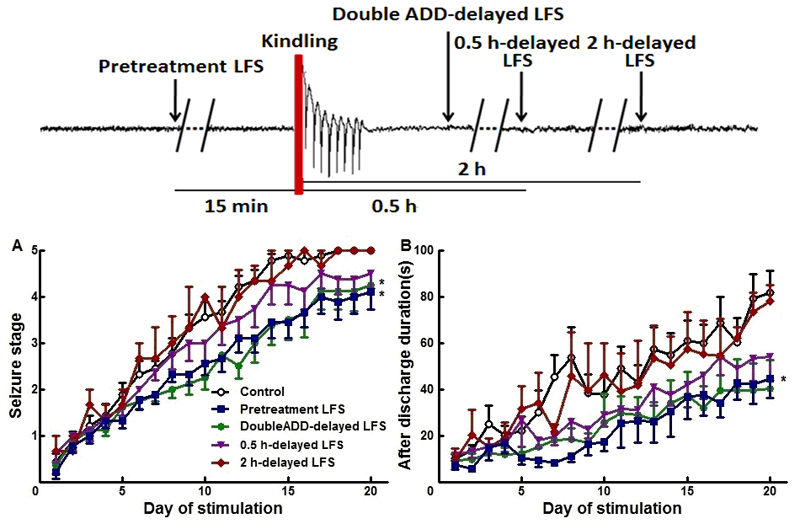A series of previous studies from Chen group have proved that the anti-epileptic effect of low-frequency stimulation(LFS) depends on the targeted brain area, stimulation frequency, waveform and so on. Recently, they found that LFS of certain brain regions only exerts its effect within a very narrow therapeutic time window, which lasts from seconds to tens of seconds, thus restricting its clinical application. So it is very necessary to find targets with a wider time window or without time-dependent characteristics. Using a combination of electrophysiology in vivo, EEG analysis and molecular biologic techniques, Chen group found LFS of the subiculum exerts its anti-epileptic effects with a wide therapeutic time-window in several rat models of temporal lobe epilepsy, suggesting that the subiculum may be a promising and suitable target for clinical application. This study provided important experimental and theoretical basis for the clinical application of LFS, and indicated a new target for antiepileptic drug discovery. This work recently has been published in Neurobiology of Disease, an internationally renowned journal of neuroscience.
First author: Zhong Kai, Ph.D, Institute of Neuroscience, School of Basic Medical Sciences, Zhejiang University. 09/2004 – 06/2008 B.S. in Department of Pharmacy, College of Pharmaceutical Sciences, Zhejiang University; 09/2008 – 06/2013 Ph.D. under the supervision of professor Chen Zhong in Institute of Neuroscience, School of Basic Medical Sciences, Zhejiang University. Researches mainly focus on the pathogenesis and treatment of epilepsy and have been published one SCI paper as first author (Neurobiology of Disease, IF = 5.60) and other 6 SCI papers as co-author.

LFS of the subiculum exerts its anti-epileptic effects with a wide therapeutic time-window in amygdala kindling model of rats.